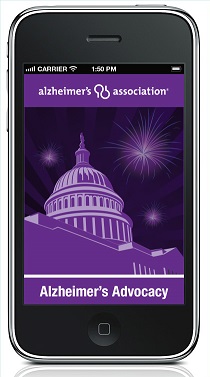Here is a great dementia resource for caregivers and healthcare professionals,
Your residents will love the Amazon Kindle Fire
Here is information on being the best caregiver you can be
Here is a way for nurses administrators, social workers and other health care professionals to get an easyceu or two
Follow alzheimersideas on twitter
The Dementia Caregiver's Little Book of Hope [Kindle
Time to Step Up
Over the years we've accomplished so many things together: Passage of the National Alzheimer's Project Act (NAPA) (P.L. 111-375), the unveiling of the first-ever National Alzheimer’s Plan, enhancements to government benefits programs for individuals with Alzheimer's, introduction of critical legislation, and increased federal funding for Alzheimer’s research in the midst of challenging budgetary times. In the past year alone we've seen a host of new bipartisan co-sponsors for the HOPE for Alzheimer's Act, new members of the Congressional Task Force on Alzheimer’s Disease, dozens of town hall events, thousands of in-person meetings with elected officials, and a growing recognition of the Alzheimer's crisis among federal officials.
By reaching out to your elected officials, via the phone and through our action alerts & petitions you've created change and made a difference in the lives of those affected by this devastating disease. You’ve repeatedly demonstrated your commitment to conquering Alzheimer's. Isn’t it time members of Congress did the same?
Tell Congress To Support Alzheimer’s Caregivers. Urge your members of Congress to support the HOPE for Alzheimer’s Act.
The Health Outcomes, Planning, and Education (HOPE) for Alzheimer's Act (S.709/H.R. 1507) will improve diagnosis of Alzheimer's disease and increase access to information on care and support for newly diagnosed individuals and their families. An early and documented diagnosis when coupled with access to care planning services leads to better outcomes for individuals with Alzheimer’s as well as their caregivers. Tell your member of Congress that families living with this devastating disease need HOPE!
Save the Date!
Mark your calendars now for the 2014 Alzheimer’s Association Advocacy Forum, taking place April 7-9 in Washington D.C. The Association’s 26th annual Forum includes the National Alzheimer's Dinner, an excellent opportunity for advocates to celebrate another exemplary year of advocacy, growing awareness and leadership in advancing Alzheimer's research and support. Visit alz.org/forum/ to learn more about the Advocacy Forum.
 Have you downloaded our ALZ Advocacy mobile app yet? Visit alz.org/advocateapp on your iPhone or Android device
Have you downloaded our ALZ Advocacy mobile app yet? Visit alz.org/advocateapp on your iPhone or Android device


